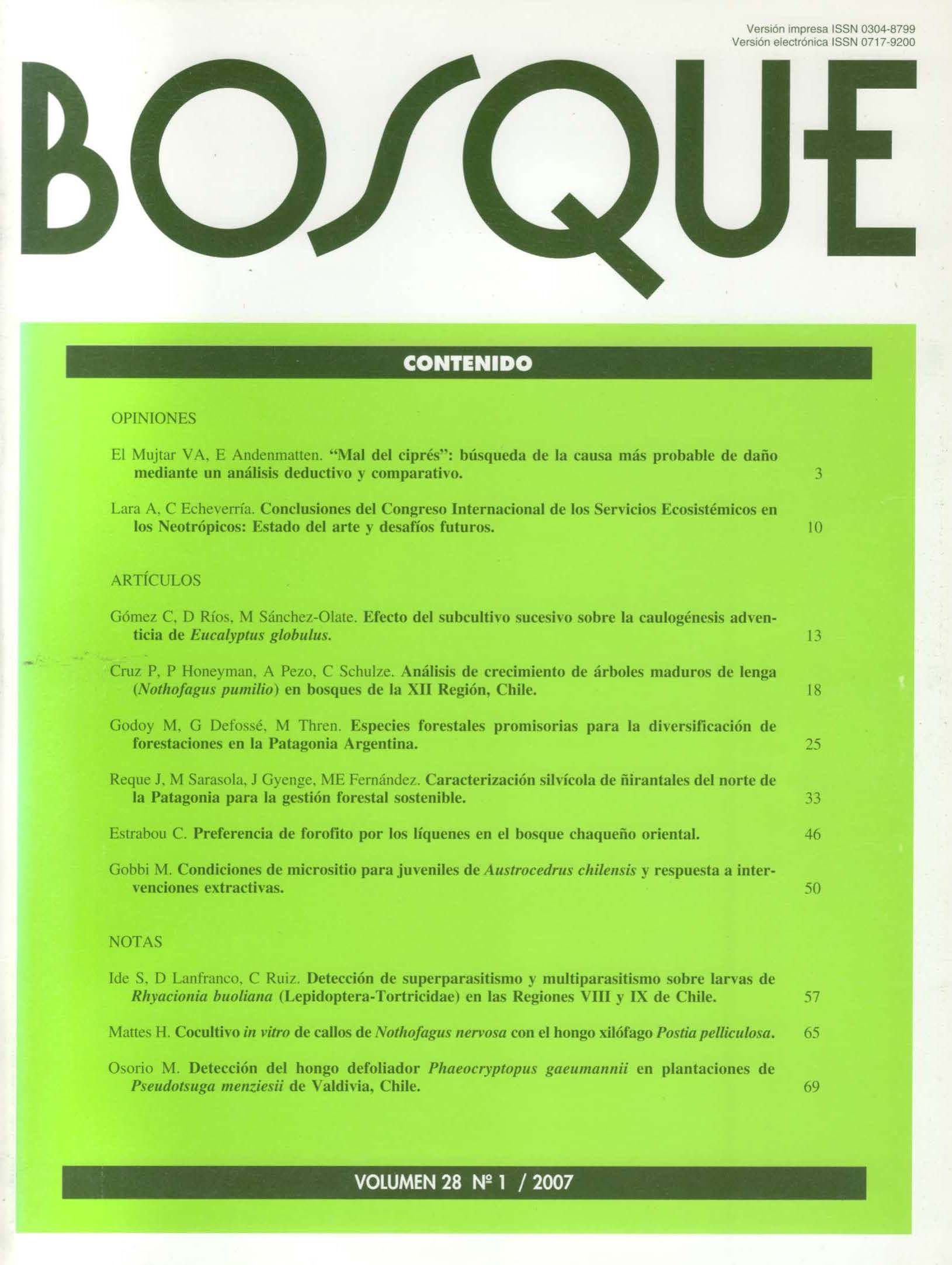Microsite conditions in Austrocedrus chilensis saplings and response to extractive practices
Main Article Content
Abstract
This paper studies the environmental requirements of the “Andean cypress” (Austrocedrus chilensis) saplings, and the effect of silvicultural practices on their abundance and size. The study was carried out in four pure and dense forests of this species in the Argentine Andean-Patagonian region. In every site, one control plot and 1-3 managed plots were considered. Four microsite condition influence (brightness, tree canopy, and shrub and herb cover) on sapling abundance and size was studied in control plots. Silvicultural practices effects (thinning and understory removal) on sapling abundance and growth were studied in managed plots. Results indicate that, at microsite level, abundance is positively associated to shrub cover, and, to a lesser degree, to tree canopy. The highest density was found in poor moisture and fertility soil conditions, presenting low seedling recruitment and low tree density; possibly due to the presence of a suppressed-individual sapling bank. Silvicultural practices limited abundance only when thinning was combined with understory removal. This effect was independent from microsite conditions. Sapling growth is not related to silvicultural practices.

